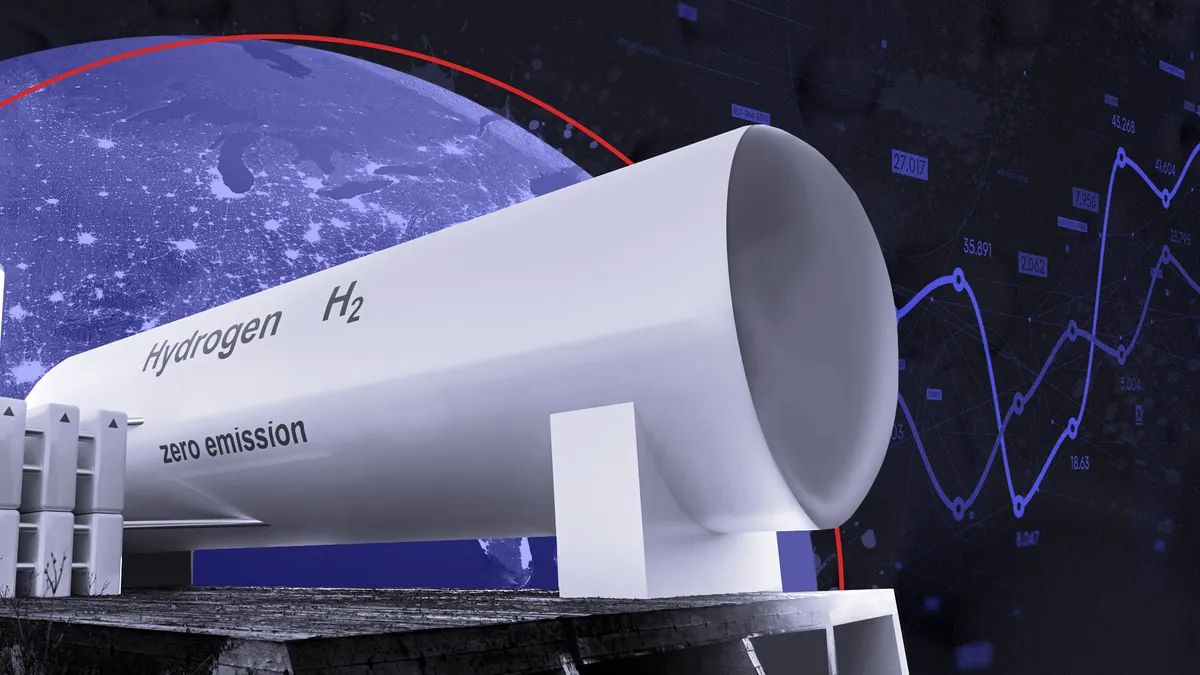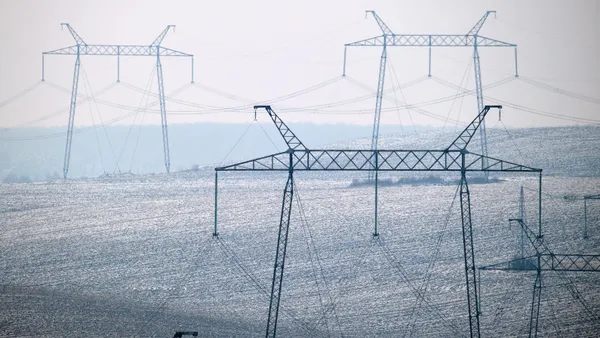Dive Brief:
-
Secretary of Energy Jennifer Granholm kicked off a summit on the Hydrogen Shot — a challenge from the Department of Energy to industry and academics to find a means of cutting the cost of hydrogen to $1 per kilogram — with a call for participants to focus on clean, zero carbon solutions and to avoid "solutions that claim to be clean but are not."
-
Breakout sessions during last week's summit allowed participants to choose specialized discussions focused on ways hydrogen could be produced. One track covered the use of electrolysis to split water and create "green" hydrogen, while another considered innovations to conventional methods of extracting hydrogen from methane, and a third looked at early stage or even theoretical means.
-
While Senator Joe Manchin (D-West Virginia) described hydrogen as a true "all of the above fuel" and argued the U.S. needs to consider all possible options for hydrogen production, Chanell Fletcher, deputy executive officer for the California Air Resources Board, expressed concern that casting too wide a net would "muddy the water and open the door for polluting pathways."
Dive Insight:
With the U.S. Department of Energy choosing hydrogen for the first of several new initiatives aimed at decarbonizing the electric grid, and with multiple dignitaries expressing a belief that hydrogen will prove critical to fully eliminating carbon emissions, the hydrogen moment seems to have officially gone mainstream. But the next debate may entail how hydrogen fuel will — or should — be produced.
Achieving the DOE goal set in June of cutting the cost of carbon-free hydrogen to $1/kg, which would make the alternative fuel competitive with natural gas and result in a levelized cost of energy at 5-6 cents per kWh, is a critical milestone, Manchin told an audience of more than 4,000 attendees during a Tuesday morning webinar.
"Industry is one of the hardest sectors to decarbonize," he said. "Hydrogen can address cement, steel and other industries that collectively represent 23% of U.S. emissions."
Bill Gates similarly praised the goal, saying that "no country or company will adopt clean fuels or buy clean concrete or steel if they are significantly more expensive than the products they replace,"
But later in the webinar, Arun Majumdar, founding director of the Advanced Research Projects Agency – Energy and now a professor at Stanford University, explained that the difficulty of the hydrogen shot will largely depend on how many avenues are disqualified from the challenge. Most hydrogen is currently extracted from methane using heat and steam, and this resulting "gray" hydrogen already costs just slightly more than the $1 target, he said. But "green" hydrogen, a term typically used to describe hydrogen that is produced by splitting water with electricity from renewable sources, can cost as much as $5/kg currently, he said.
And as the excitement surrounding hydrogen grows, various interests have come up with their own color-based monikers for a host of other production methodologies — a development that Fletcher described with some skepticism.
"One of the things we're having conversations about as we talk about hydrogen is making sure California has a clear and high standard when we talk about which technologies we're going to prioritize and subsidize," Fletcher said. "The concern from environmental justice stakeholders is, wait a minute, what do these terms mean?"
The entire spectrum of color-coded hydrogen was nonetheless on full display during the summit. Glen Murrell, executive director of the Wyoming Energy Authority, touted the state's new energy strategy, established last year, and the potential for pairing carbon capture with steam methane reformation to make "blue" hydrogen.
The goal, he said, "in one brief term is to power the nation with an all-of-the-above, net zero energy mix. That's a massive challenge because Wyoming has an abundant hydrocarbon resource base, but we have to supply energy in a decarbonized world."
While Kathryn Huff, acting assistant secretary and principal deputy assistant secretary for the DOE's Office of Nuclear Energy, touted the potential for nuclear energy to yield "pink" hydrogen by using waste heat from an advanced nuclear reactor to boost the efficiency of renewable-driven electrolysis.
"We are really invested in supporting research into the integration of nuclear and renewable hydrogen energy systems," she said.
Meanwhile, Majumdar highlighted the potential for "turquoise" hydrogen, which would involve using high-temperature decomposition to extract hydrogen from solid carbon. And Linda Horton, associate director of science for basic energy sciences at DOE, noted the possibility for even more methods of production using heat, light, chemicals, and even microbes.
"All of these require lots of innovation," she said, but the basic science is sound.
Drawing on his experience with the SunShot initiative from 2011 that helped to drive down the cost of solar power, Majumdar urged attendees not to close their minds to any of the possibilities too soon, saying it was too early to tell which of the many options would yield the most cost effective fuel.












